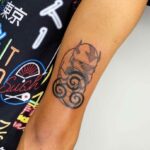Table of Contents
Today, we’re diving headfirst into a question that has been flitting around the tattoo community for quite some time: “Can you put Neosporin on a tattoo?” Now, I know what you’re thinking — “Tori, surely it’s a straightforward yes or no?” But in the world of tattoos, few things are ever that simple.

We’re about to get under the skin (pun absolutely intended) of this pervasive conundrum. Prepare to plunge into the depths of aftercare practices, scientific rationale, professional advice, and practical tips. By the time we’re through, you’ll have a robust understanding of whether Neosporin and tattoos are a match made in heaven, or a combination to avoid like a misspelled tattoo stencil.
With a combined experience of two decades in the business, countless seminars, and my own indelible ink journey, I’ve gathered a library of tattoo wisdom that I’m eager to share with you all. Strap yourself in for a dynamic exploration of tattoo aftercare — Neosporin style.
WHAT IS NEOSPORIN?
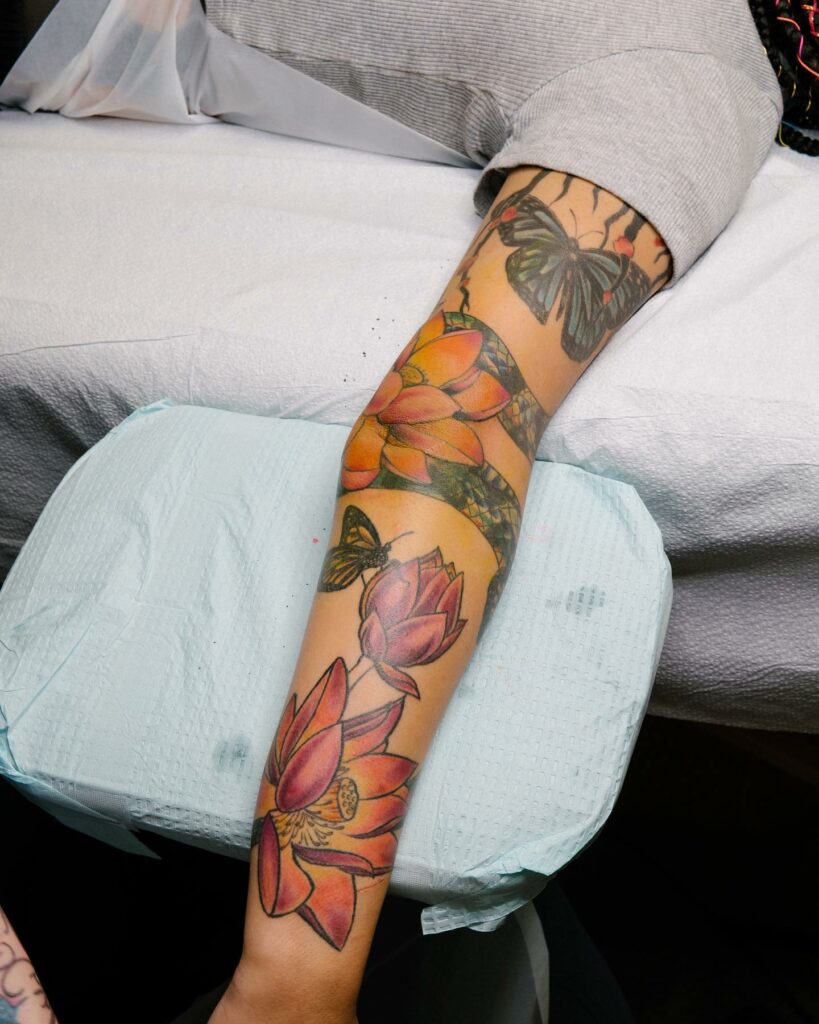
Before you consider slathering anything onto your shiny new skin masterpiece, it’s crucial to know what you’re dealing with. Enter Neosporin. This household name is known as a triple-antibiotic ointment — a superhero of sorts when it comes to minor skin injuries. It packs a punch with its trio of ingredients: neomycin, bacitracin, and polymyxin.
When you graze your knee or nick your finger chopping veggies, Neosporin comes to your rescue, accelerating the healing process, reducing the risk of infection, and turning your wounds into scabs faster than you can say “neomycin sulfate”. Sounds ideal for a fresh tattoo, right? Not so fast…
CAN YOU USE NEOSPORIN ON A FRESH TATTOO?
After getting new ink, proper aftercare is vital — it’s the difference between a vibrant, long-lasting tattoo and a patchy, faded disaster. While Neosporin might seem like a logical option, let me tell you a little anecdote from my early tattooing days.
I once had a client who insisted on using Neosporin despite my advice. A few days later, they returned with an angry, red, scabbed-up tattoo that had lost some of its original vibrance. Neosporin had suffocated the skin, causing it to dry out, and a fresh tattoo is one thing that absolutely doesn’t appreciate dryness.
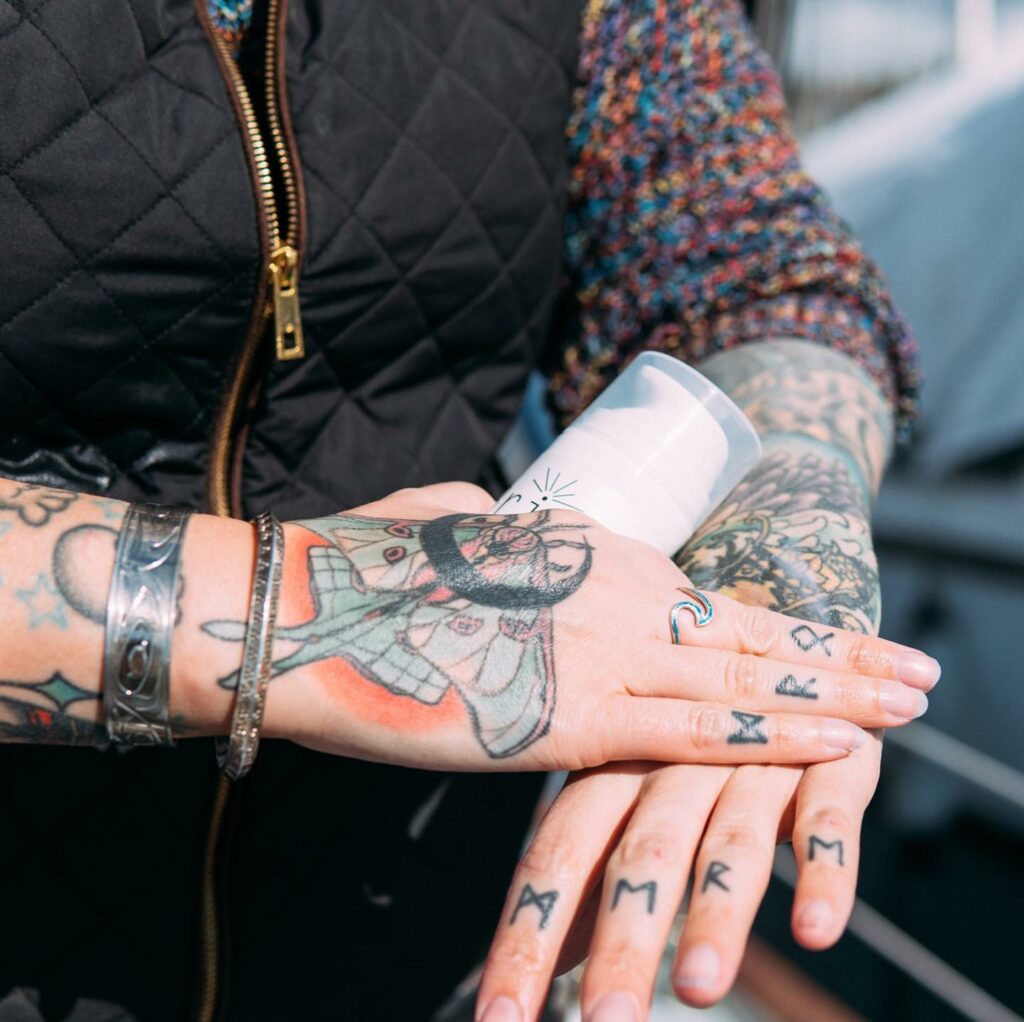
Instead of reaching for Neosporin, your best bet is to opt for products specifically crafted for tattoo aftercare. Trust me, they’re game-changers. Your new artwork needs to breathe and stay moisturized but not too moist, a delicate balance that Neosporin just can’t provide.
CAN YOU PUT NEOSPORIN ON A TATTOO?
Can you put Neosporin on a tattoo? If this query has been buzzing in your mind too, then strap in — we’re about to dissect this matter like an artist working on a delicate fine-line design.
SIDE EFFECTS OF USING NEOSPORIN ON NEW TATTOOS
Now, let’s get down to the nitty-gritty. Neosporin might be a champ when it comes to your regular cuts and scrapes, but using it on fresh tattoos can come with some unpleasant side effects.
Red bumps and rashes
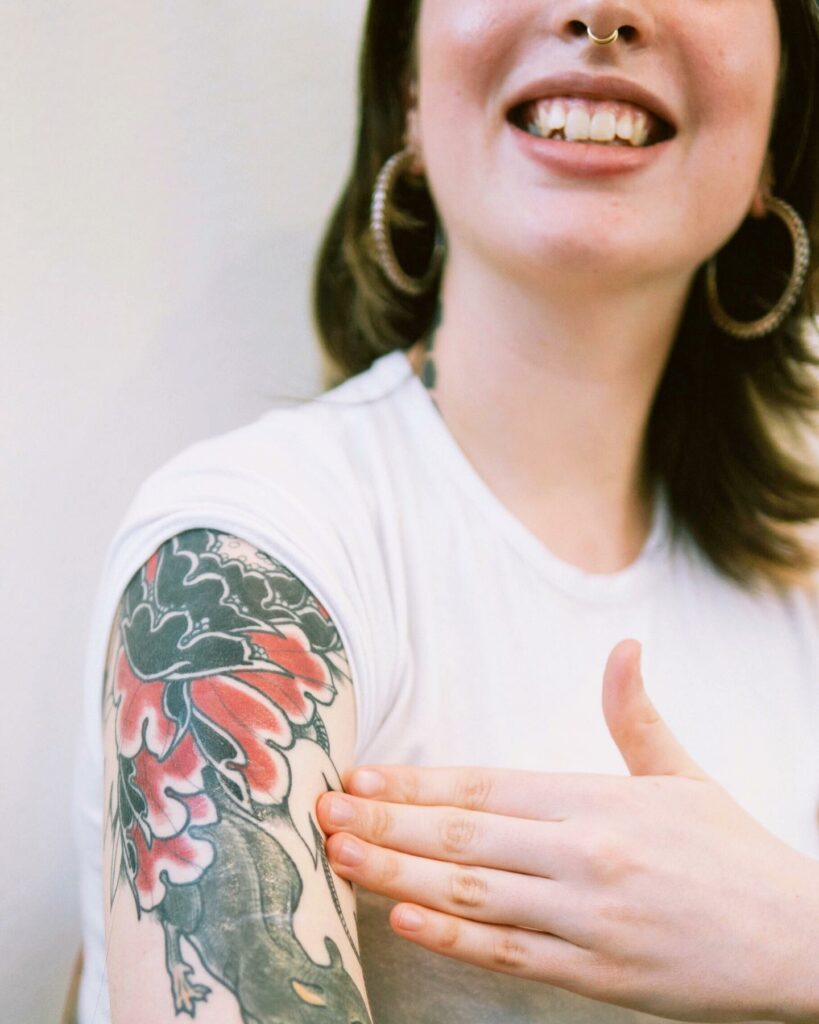
Neosporin has a knack for stirring up allergic reactions in some skin types, leading to those dreaded red bumps or even hives. If you’re lucky enough to never have experienced them, let me tell you — they’re no picnic and can potentially damage your new tattoo.
Increased risk of infection
Despite its reputation as a guardian against infections, Neosporin can have the opposite effect when used on tattoos. Its dense, jelly-like composition can suffocate the skin, preventing it from getting the oxygen it needs to heal. This can lead to an environment ripe for infections, a scenario we’d all rather avoid.
Loss of color and scarring
Remember that poor client of mine? Along with the angry red skin and scabs, their tattoo had also lost some of its original vibrancy. Early scabbing caused by Neosporin can lead to premature color loss and even scarring — definitely not the desired effect when you’re trying to heal a masterpiece.
So, in a nutshell: keep Neosporin in your first-aid kit for those kitchen mishaps and playground tumbles, but keep it away from your fresh ink. Opt for recommended tattoo aftercare products and you’ll enjoy a healthy, vibrant tattoo without any unwelcome surprises. After all, we want our tattoos to be memorable for all the right reasons!
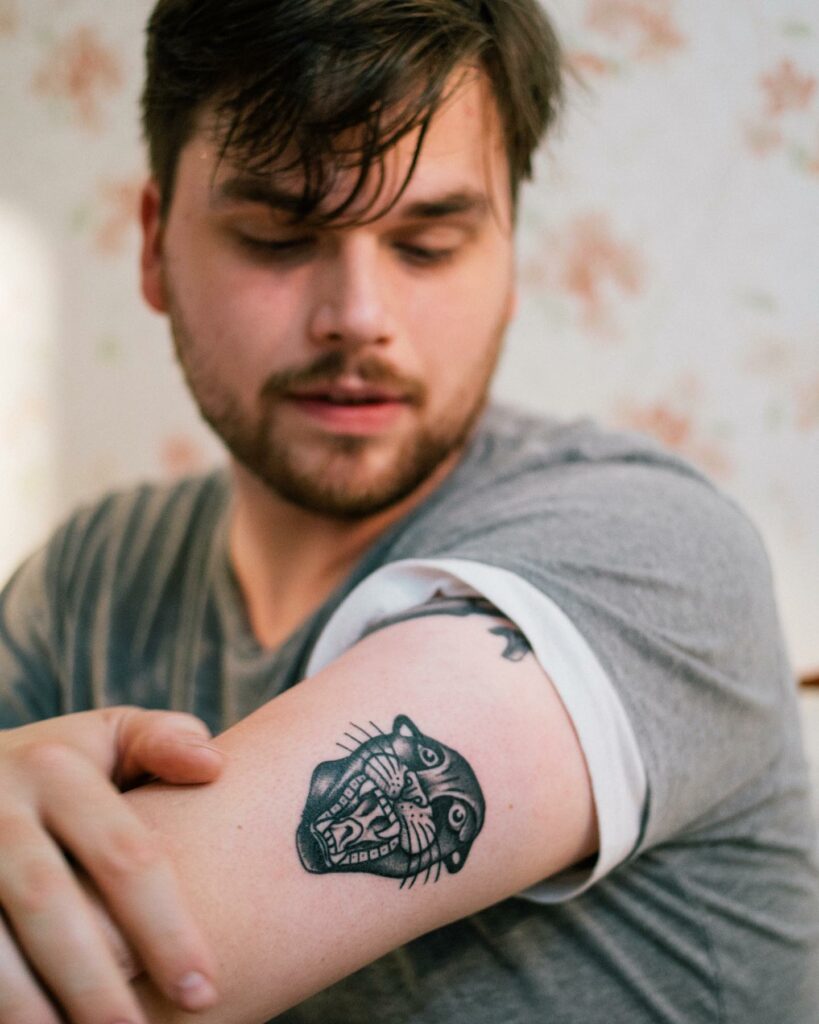
Other Products To Try
There are several products specifically designed to facilitate the healing process and preserve the vibrancy of your new ink. Here are a few you might want to consider:
- Aquaphor Healing Ointment: A staple in many tattoo artists’ aftercare advice, Aquaphor is a petroleum-based ointment that helps to soothe the skin and maintain its moisture balance. It’s also fragrance-free, which is a plus for sensitive skin.
- Tattoo Goo: This is a popular aftercare salve specifically formulated for tattoo healing. It contains a blend of natural ingredients, including olive oil, beeswax, cocoa butter, and lavender oil, to promote skin health and reduce inflammation.
- Hustle Butter Deluxe: This vegan-friendly product is a favorite in the tattoo community. It’s made from all-natural ingredients and can be used before, during, and after the tattoo process. It helps to prepare the skin, reduce redness, and promote healing.
- After Inked Tattoo Moisturizer: This is another excellent product for maintaining the vibrancy of your tattoo. It’s a vegan, non-petroleum-based lotion enriched with grape seed oil.
- Bepanthen: Originally developed as a diaper rash cream, Bepanthen has found a secondary use in the tattoo world. It’s a gentle moisturizer that also aids in the skin’s healing process. However, not all artists recommend it, so consult with yours before using it on a fresh tattoo.
Remember to always follow your artist’s advice when it comes to aftercare, as they know what will work best with their style of tattooing and the specific inks they use. If you experience any unexpected reactions or complications, be sure to reach out to them or a healthcare provider. Your tattoo is an investment and taking care of it is essential to maintaining its beauty for years to come.
Conclusion
As we’ve explored, using Neosporin on a fresh tattoo, while it may seem like a logical choice, can in fact lead to complications — from allergic reactions to potential infections, and even color loss or scarring. Stick to using Neosporin for everyday cuts and scrapes, but for your beautiful new ink, rely on tattoo-specific aftercare products. They’re designed with the precise needs of your healing skin in mind.
Remember, maintaining that delicate balance of moisture and breathability is key to ensuring your tattoo heals properly and remains vibrant. Don’t be shy to ask your tattoo artist for advice or recommendations — we’ve been in the trenches and are always eager to guide you on your tattoo journey.
When it comes to tattoo aftercare, knowledge truly is power. Stay informed, stay engaged, and you’ll be a master of your own tattoo care in no time, enjoying your stunning artwork for years to come. Tattooing isn’t just about the artistry of the needle, it’s about the journey, and your role in aftercare is a significant part of that voyage. Happy healing!




